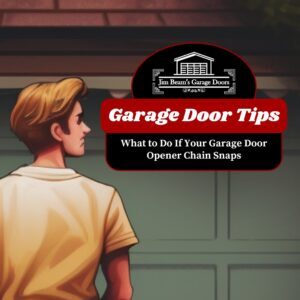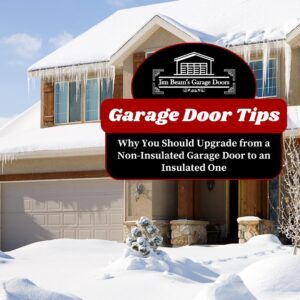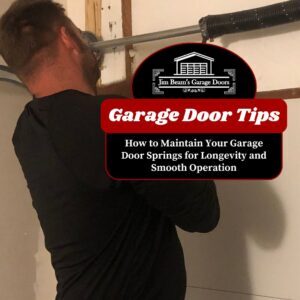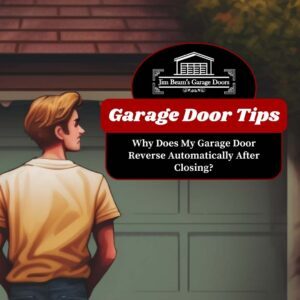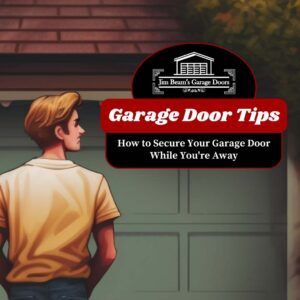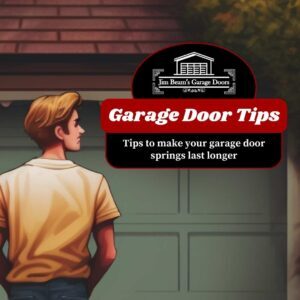Discovering water seeping under your garage door can be a frustrating and potentially damaging problem. Not only can it damage your belongings stored in the garage, but it can also lead to moisture-related issues such as mold and mildew growth. In this article, we’ll explore the common causes of water intrusion under garage doors and provide effective solutions to help you address and prevent this issue.
Improper Garage Door Seal
One of the primary reasons for water seepage under your garage door is an inadequate or worn-out garage door seal. The seal, also known as weatherstripping, is designed to create a barrier against the elements, including water. Over time, the seal can deteriorate, crack, or become misaligned, allowing water to enter. If you notice water coming under your garage door, inspect the condition of the weatherstripping. If it appears damaged, compressed, or no longer provides a tight seal, it’s time to replace it.
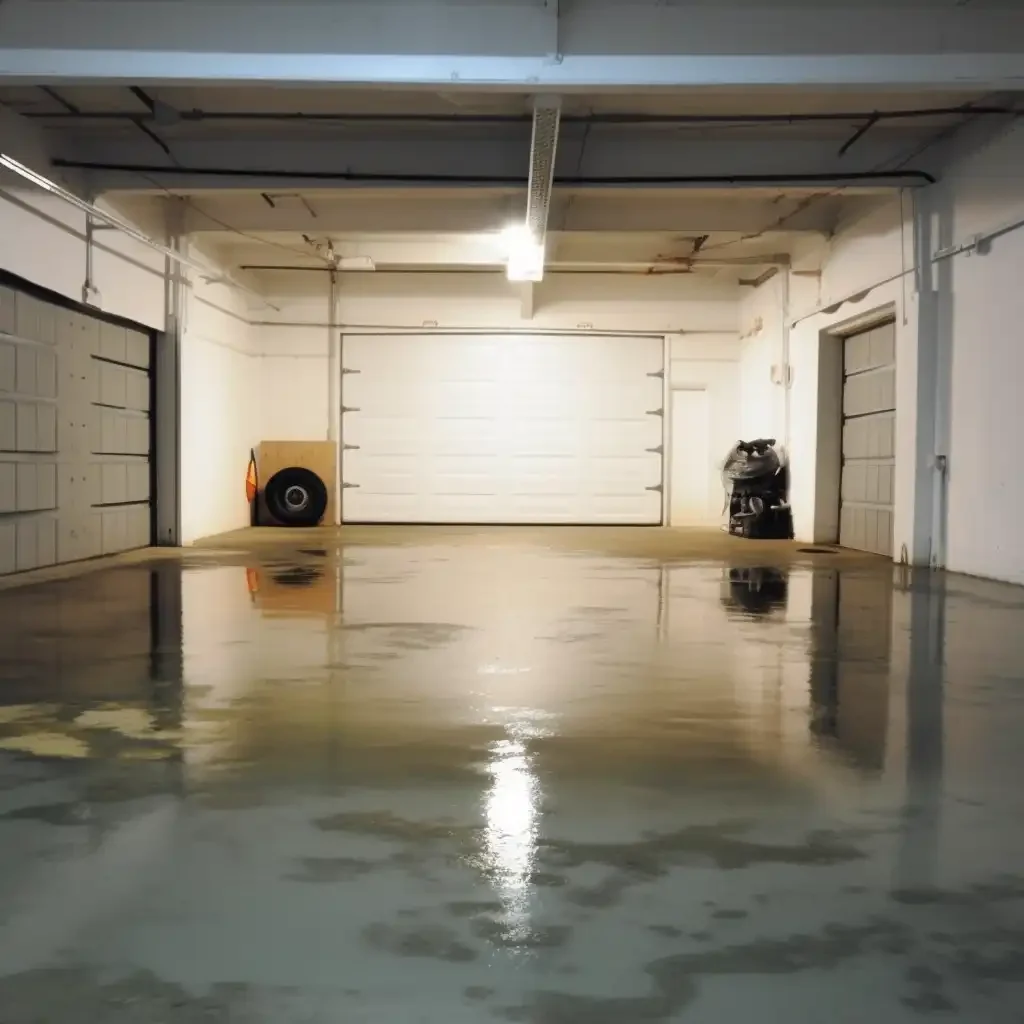
Uneven Garage Floor
An uneven garage floor can contribute to water infiltration under the garage door. If your garage floor has low spots or slopes towards the interior, rainwater or melting snow can accumulate and find its way under the door. To address this issue, consider leveling the garage floor or installing a floor sealant. Additionally, installing a threshold seal at the base of the garage door can create a barrier against water infiltration.
Insufficient Drainage
Poor drainage around the perimeter of your garage can also lead to water seepage under the door. If water pools near the garage, it can find its way under the door, especially during heavy rainfall. Ensure that the ground around your garage slopes away from the door, allowing proper drainage. Installing gutters and downspouts to divert water away from the garage can also help prevent water accumulation.
Damaged or Misaligned Garage Door
A damaged or misaligned garage door can create gaps or uneven spaces, allowing water to infiltrate. Check for any visible damage to the door panels, hinges, or tracks. If you notice any issues, it’s important to have them repaired or replaced promptly to ensure a proper seal. Jim Beam’s Garage Doors offers a wide selection of high-quality garage doors that are designed to provide a secure and watertight seal. Our expert technicians can assess your garage door’s condition, recommend the best course of action, and provide professional installation or repair services. Contact Jim Beam’s Garage Doors today for a fast and free estimate on a new garage door!
Other Reasons Water Enters Your Garage
Broken Plumbing
If puddles of water keep forming in your garage, it might not be coming from the outside. If your garage shares a wall or contains appliances like washing machines, dishwashers or sinks, the water may be coming from a leaky fitting or broken unit.
Cracked or Pitted Concrete Floors
Moisture can find its way through your floors if they are damaged or improperly sealed. Check to see if water is coming up through the cracks in your garage floor. If this is the case, you may need to have your garage door floor professionally serviced or replaced.
Window and Door Seams
The water may be entering your garage through the seams of your windows or an improperly sealed exterior door. Check to see if you have water beading around the seams of windows and doors. If you believe water is entering this way, you should re-seal the seams with a silicone-based sealant or contact a professional to take care of it for you.
Sloped Driveway
If your garage sits on a downwards slope without proper drainage it can cause water to flow into your garage. If you are getting water into your garage as a result of a sloped driveway, consider installing proper draining systems or even flattening your driveway.
Dryer Units
Your tumble dryer may be causing water to re-condense in your garage. If you keep a dryer in your garage, make sure that the vent system is functioning properly. A dryer vent system that is not properly venting can be a source of water in your garage. Check your windows after running your dryer unit to see if moisture is re-condensing.
Clogged Gutters
If your gutters are filled with debris it can cause water to spill out from the gutters near the front of your garage. You or a professional service should check your gutters to see if debris like leaves, sticks and moss are preventing them from draining properly.
Conclusion
Dealing with water coming under your garage door can be a frustrating problem, but with the right solutions, you can effectively prevent water infiltration and protect your garage and belongings. Addressing issues such as worn-out weatherstripping, uneven garage floors, insufficient drainage, and damaged doors is essential in maintaining a dry and secure garage.
If you don’t know already, Jim Beam’s Garage Doors is one of the top-rated garage door installers and repairers in the Northern Colorado area. With over 120+ reviews on Google and an average rating of 4.9 stars and top-rated status on HomeAdvisor, you can trust Jim Beam’s to do the job right the first time. Get a fast and free estimate on your garage repair, garage maintenance, or garage door installation today by contacting us!
Frequently Asked Questions
Common causes include worn-out or inadequate weatherstripping, an uneven garage floor, poor drainage around the garage, or a damaged or misaligned door.
Replace damaged weatherstripping, level the garage floor, improve exterior drainage, repair or replace damaged doors, and ensure proper sealing around windows and doors.
Durable, tight-sealing weatherstripping designed for garage doors is best. Consider materials that can withstand local weather conditions and provide an effective seal.
Yes, if the floor slopes towards the interior or has low spots, water can accumulate and seep under the door. Leveling the floor or installing a threshold seal can help.
Ensure the ground around the garage slopes away from the door, install gutters and downspouts to divert water, and consider additional drainage solutions like French drains.
If the door is significantly damaged or misaligned, causing gaps or uneven sealing, replacement might be necessary. Minor damage may be repairable.
Yes, leaks from plumbing, appliances, or condensation from dryer units can cause water accumulation. Inspect for leaks and ensure proper venting for appliances.
Addressing damaged or cracked floors may require professional repair or sealing to prevent moisture penetration.
If your driveway slopes towards the garage without adequate drainage, it can direct water into the garage. Consider redesigning the slope or adding drainage solutions.
For expert advice and solutions, contact Jim Beam’s Garage Doors. They can assess the issue, recommend repairs or replacements, and provide a fast and free estimate for their services.


